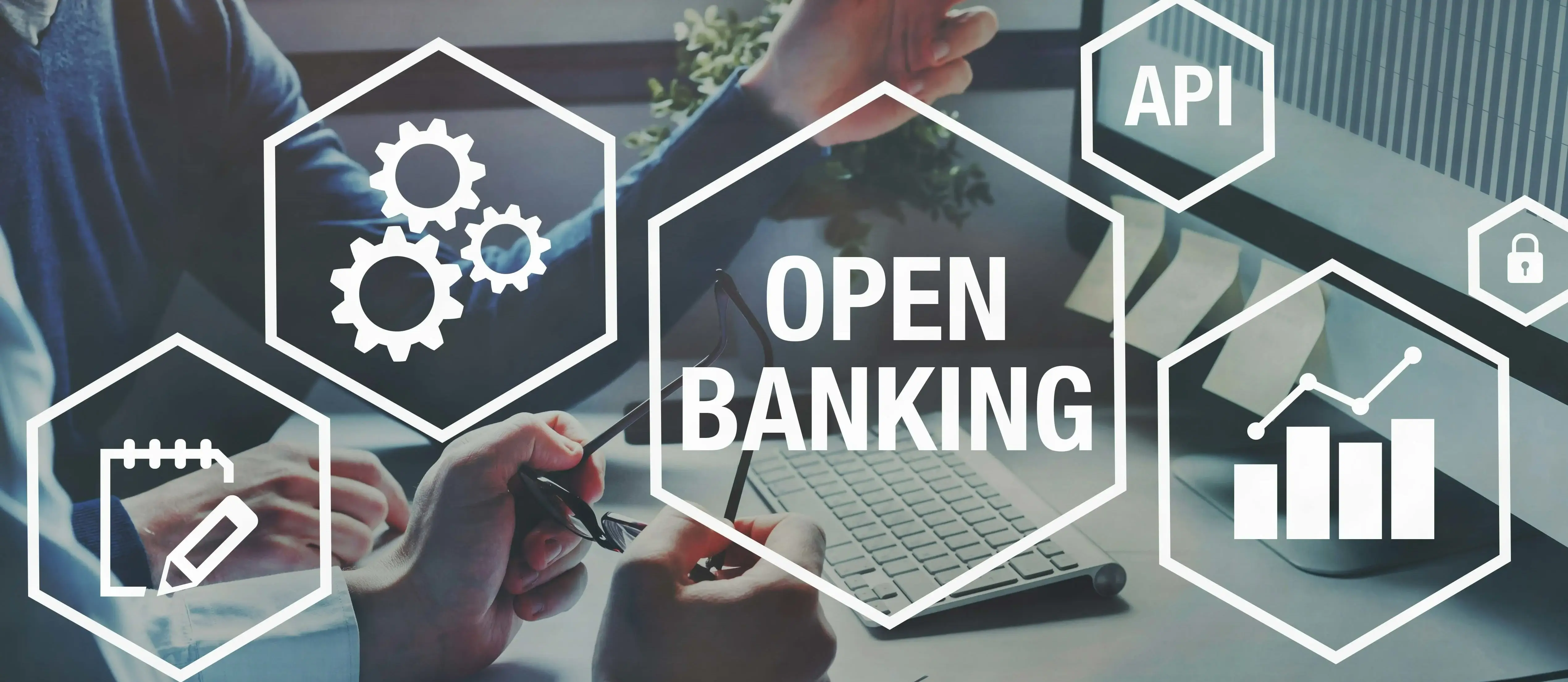Episode 60
The CX Insider team attended this year's Branch Transformation and interviewed industry experts to bring you insights from the event. Branch Transformation is the world's leading conference dedicated to branch design, customer experience and strategy-driven transformation. A high-quality speaker programme forms the core of this two-day event, packed with thought-provoking case studies from leading banks, showcasing how they are using cutting-edge technology and human-centred design to drive real customer value.
This article summarizes the main themes of discussion taken from our interviews with Dominic Hirsch, Managing Director at RBR, Lynne Pitwood, Head of CX at Newcastle Building Society, Duncan Cockburn, Founder and CEO at OneBanks and Martin Shires, Business Development Manager at Glory.
Episode 60
Episode Summary
Current trends in banking
The biggest trend is around the role of technology and its impact on human interactions. According to Lynne Pitwood, “there’s almost two schools of thought”, one focused on digital enabling human interaction in branches, and another considering digital as a replacement for human interaction. In the so-called ‘new normal’, the first option would be the best, as people are used to engaging with technology, but are also keen to have those face-to-face interactions that bring additional value to their experience.
For this reason, there is now a focus on the concept of ‘phygital’, referring to those hybrid models where digital innovations and human interactions meet. Two practical ways of allowing phygital interactions are video banking and appointment scheduling. According to Dominic Hirsch, video banking allows customers to speak to experts 24/7, while appointment scheduling offers them the possibility to book a slot to go to the branch and talk to the right person that is an expert in what the customer requires.
The open banking revolution
Another popular trend that has been at the center of the discussion is the concept of open banking. Using open APIs, third-party financial service providers would have open access to the customer’s accounts, transactions, and other data. As stated by Duncan Cockburn, this “transforms the way people interact with their bank”, allowing a new realm of opportunities and enabling competition. This translates into the development of new and better ways for customers to engage, however, whenever and wherever they want.
Whilst in the past we saw digital supporting branches, as Martin Shires stated, “we are now going to see for the next five years branches supporting digital”.
The role of the branch in the community
Another theme linked to open banking is the role of the branch within its community. Lynne Pitwood shared some interesting insights from research they run at Newcastle Building Society, where 75% of customers say that banks play an important role in the community. As a result, they have enabled their members to use branches as community spaces free of charge for multiple reasons, including the opportunity to connect with the employees and “get to know people as people”. According to Martin Shires, in fact, branches will go back to their advisory nature, which they used to have before people started transacting there.
This article summarises in episode 60, ”Insider View: The Future of Retail Banking, RBR 2021" recorded by CX Insider. For more information, listen to the episode or contact our guests on their LinkedIn profiles.
Duncan Cockburn, Lynne Pitwood, Martin Shires, Dominic Hirsch
Written by Alessia Trabucco
Full episode transcript
Duncan: I think one of the biggest trends is the concept of phygital, the concept of hybrid models that embrace both technology and human interaction. Banks recognize that branch models traditionally aren't commercially viable, but at the same time, people do still want that face-to-face interaction, so a lot of people are trying to come up with new ways in which you can use technology but still engage people and help people on that digital transformation. It's interesting to hear different people's views. There are a lot of different views kicking about in a sense of a lot of people still want cash to be king, which I personally don't necessarily think is the case, I think it's important to have a choice, and I think cash will continue to decrease, but it's important to come up with new, innovative ways to make sure that it's sustainable for people who want it. And so, driving cash out isn't the right way of doing it, it needs to be consumer-driven, opposed to bank-driven.
Valentina: Hello, everybody, and welcome to another episode of CX Insider. Today, we will take you to RBR Branch Transformation 2021, a two-day banking event that took place last week in London. Branch Transformation is a global event focused on branch design, innovation, customer experience, and strategy-driven transformation, all within the banking and financial industry. So, for those who attended the event, this is a 20-minute-long summary of the main highlights for those who couldn't attend, you will hear some really information-dense insights relevant to your industry. Enjoy the episode, and don't forget to subscribe to the podcast on your preferred channel and join our community on LinkedIn and Instagram.
Valentina: It is the first time the inside team decided to record content in physical events, and as you will hear, I think it turned out great. My colleagues, Greg and Alessia, interviewed four industry experts and ask them about their viewpoints on the branch of the future. The professionals you will hear are Dominic Hirsch, the Managing Director of RBR, Lynn Pitwood, Head of CX at Newcastle Building Society, Martin Shires, Business Development Manager at Glory, and Duncan Cockburn, the CEO of One Banks. We started off by asking what they thought were the key highlights of the event.
Lynne: I think what I've noticed is almost two schools of thought. Obviously, digital is coming through really, really strongly, but there's a school of thought that digital is there to enable that human interaction in the branch, which we are really passionate about, but also another school of thought that digital is there to almost replace the human interaction that I think is a real shame in a lot of senses. What we've noticed through COVID, obviously, is that digital adoption has absolutely ramped up, but we've also noticed that isolation has come into play, you know, people are more isolated than they used to be, they're not interacting with humans because of lockdowns. And certainly, it's come through our own voice of customers that people can't wait to come back into branches just to have those face-to-face conversations. I think they've been pushed into a digital channel sometimes because they haven't necessarily wanted to operate in that area, but they've been forced to do so through circumstance. But actually, they want to get back to the old normal, let alone the new normal. And for me, the new normal is not about replacing humans with technology, but it's allowing technology to enhance that human interaction and make people, you know, make our colleagues focus on the right tasks in branch to give people that best possible service experience rather than replace that service element.
Valentina: Martin summarised the key trends that were most talked about at the event.
Martin: If you could look at, I guess, what everybody was talking about 2/3 years ago when the event was really kind of motoring along, and it was the push toward digitization. But the one reinforcing message at the time was how they're seeing kind and the blending of digitization of processes still within a kind of physical environment, i.e. the branch. Because really, if we make that simple back in the day, we used to be masters of the appropriate paperwork, but then now a case of you just got to your tablet and sign on there and remove any kind of requirement to slow down the process, really, contextual delivery of data, for example, there are branch staff at the right time, is also moved on significantly to become the routine i.e. rocket with your tablet assisted service and you've got the customers going a CRM information and office right at your fingertips, as well as again become the norm. What I do like to see through an Allen International can have put this across last night really well, they said. Look, guys, whilst we see that kind of crashing together of branch numbers and redistribution, which is important to notice not just close up the redistribution, reformatting, and kind of got to its peak digital, of course, has got to its peak. In the past five years, we saw digital supporting branches, now we're going to see for the next five years branches supporting digital, which still means even though it's a bit of a kind of turning on its head type of phrase that you're going to have the customer saying, I require all those touchpoints to be equally capable whenever I want it to be.
Martin: And one thing they did bring out was emotional intelligence and relevance as a brand is going to be reinforced by what your branch can do. Now take, for example, I mean, some of the trends we're seeing in subscription banking, we've seen it on the most basic of kind of cash automation through ATMs, for example, has gone more and more away from an owned on-premise kind of automation state more towards the IADS, the independent ATM deployers are now to the point where, quite frankly, and we invested in this heavily in the past couple of years where customers, particularly routinely in the middle of Europe and been going up to retailers just presenting their bank app with a barcode that says withdraw or deposit money, those retailers just simply use their existing barcode pause infrastructure, and the money is either deposited or withdrawn. Just as you're doing your normal daily business that is pushing as heavily the cash automation really towards extra capacity for banks to say, ah, we can let our customers not only go about their business away from our branches, but it doesn't look like we're shoving them along that kind of route there as well. So a lot more can a sympathetic ability to migrate routine transactions away from branches so they can emphasize this return to an advisory nature, which is what branches used to be about 20 years ago before we suddenly started transacting there, you know.
Valentina: Digital supporting branches or branches support. Digital, it's two sides of a coin, and the one term that includes both of these is phygital.
Duncan: I think one of the biggest trends is the concept of phygital, the concept of hybrid models that embrace both technology and human interaction. Banks recognize that branch models traditionally aren't commercially viable, but at the same time, people do still want that face-to-face interaction. So, a lot of people are trying to come up with new ways in which you can use technology but still engage people and help people on that digital transformation. And it's interesting to hear different people's views. There's a lot of different views kicking about in a sense of a lot of people still want cash to be king, which I personally don't necessarily think is the case. I think it's important to have a choice, and I think cash will continue to decrease, but it's important to come up with new, innovative ways to make sure that it's sustainable for people who want it. And so, driving cash out isn't the right way of doing it, it needs to be consumer-driven, opposed to bank-driven. But yeah, that's a synopsis of some of the conversations I've had so far.
Valentina: The very core question for which everyone is trying to find the best answer is, what is the role of the branch?
Dominic: Even pre-pandemic, the role of the branch has been changing. To be honest, I think we all know that people use mobile banking, internet banking much more than they did in the past, and people visit the branch less often. So even pre-pandemic, there was a discussion around the role of the branch and branches were already evolving. Some banks were further ahead with that, others less so. And I think what we've seen this year is that during the pandemic, many branches were closed, they've reopened, but they've often reopened in a slightly different form from before. Some of the things that they did during lockdown, for example, scheduling of meetings, I think now pretty much many, many banks now, if you want to actually speak to somebody in the branch, you actually have to schedule an appointment, and that works actually for both the customer and the bank because it works for the bank because it means they can plan and they know who they need, but actually works the other way as well. It means the customer can actually go to a bank knowing that they will actually speak to somebody and speak to somebody that knows what they're talking about. Whereas in the past you could turn up to a branch and you didn't know whether they'd be somebody available where they send you away, whether you end up speaking to somebody who didn't really have much expertise in the thing you wanted to talk about. So there's been a lot of discussion around how branches are evolving, so the role of the branch and how you should run branches, a subtheme of that has been the role of the branch within communities because I think we're all aware that there's been a number of bank closures and that's given banks, to be honest, a quite negative press over the past decade, but particularly over the past two years, but I think banks are committed to their communities, it's just that it's very hard for a bank to justify running a branch if they're not getting the traffic. So, I think what banks are doing, they're closing some branches and I think that's inevitable, but what they're trying to do with their remaining branches is to make them proper community centers where you can come in and deal with a whole variety of sort of banking and other needs that you might have. So I think that role of the branch is probably the single overarching theme that we're seeing. Maybe if I could pick one subtheme as well, that would be video banking. It's something a number of the banks have talked about in different forms, and that really picks up on the whole remote working thing where but you know, we sort of refer to that earlier, which is that the customer is much more used to in accepting now of the idea of dealing with people over video and that again, it does allow customers to speak to an expert, often 24/7, about whatever it is they want to talk about. And that was something which you just couldn't do before, you certainly couldn't do it 24/7, but even in regular banking hours, you wouldn't necessarily be able to do that. So, I think not all banks are there yet, but we were at this conference already heard of a number of case studies of banks that are have really rolled out good quality video banking solutions, and I think we'll see more of that over the next two or three years.
Valentina: Many people agree that branches should play a more engaging role within local communities.
Lynne: We know that our branches do instill a degree of trust within our member base, and certainly external research has also suggested that financial institutions that do have a branch presence do make it more trustworthy, I think about 50% of consumers said it does have more or more trust for them. And again, what I said, yes, it is, you know, 75% of consumers say that banks play a really important part in the community, and I don't know how you could do that or play that community role without having a community space available. Certainly, what we're doing with our branch network is encouraging the community to use it for multiple reasons to come in and use our community spaces that they can use free of charge and really get involved with our colleagues, it just gives our colleagues an opportunity to become part of the fabric of the area in which they serve and get to know people as people. So some of the research that we've done with our purely digital accounts, why do people take those accounts out? Well, because we have branches, they know where their money is, and it's almost a case of if anything went wrong digitally, I know I could walk into a branch at any moment in time and have a conversation with a human being who would be able to help me. And that's still really, really important and valuable. So, it comes back to the fact that digital to me cannot totally replace that human interaction, and that needs to have a face-to-face conversation with someone.
Valentina: Another major topic of discussion at this year's branch transformation was the concept of open banking.
Martin: If we were to give you snippets of our conversations with many of our Tier one banking customers around the world, and we are talking about, OK, guys, how can we get you to a model which is more profit and loss oriented in terms of investment for cash infrastructure? How do you wish to give you a way that says that when your customers are doing something offsite again, for example, in a retailer or as you see Greg white label branching where I guess the longer term is shared branching, which of course they've done in the US for many, many years, particularly in the community banking side, which I see if we think about it, guys, is what we all used to do 20 years ago, you could walk into a NatWest and say, 'Hi, I'm a royal bank customer, but I'm just want to cash my check here' and in a way that would use a cleaning system and say, 'Yep, you're authorized, you've got your guarantee card would pay money out'. You know, it's not as slick in those days, but we're still seeking that ability, I guess, as consumers to say, OK, you can go anywhere to do your transacting now, I guess to me as if we think. About it, though, the ability to influence your customers and remain loyal to your brand, then getting distilled down to authentication of preceding on your mobile app is one way to make it work, but you're still faced with an ability that says OK if customers in underserved or, you know, deserted if you like, but where the profit and loss of the major tier ones struggle to operate, in particular towns and villages and cities, particularly as COVID, has accelerated that going a downturn in footfall and has made them, I have to think hard about where they're going to redistribute to? That vacuum is allowed I guess there's one useful phrase I've heard at the conference so far that the value of the branches that remains shoots up by the speed at which all the other branches are closed. You know, so really that last man in telling that kind of ability to say, Well, guys, you can either be a white label branching, which our OneBanks investment seeks to do, where one banks are started to open their shared branch and concept where they say, Listen, we've got the ability through open banking to see the customers, you can come and register with us and the local co-op we've got a bank branch built inside. There was kind of routine kind of community shops and you can do your normal transacting banking and next stage will then be to take it to the point where why don't you white label lies if that's the right kind of word, they're advisory, banking and the one banks and think in the next stage to go beyond transaction banking is to say, well, if the customer comes in and says, 'Well, I am a Barclays and NatWest Royal Bank customer, I don't have a branch here. I'd like to use the branch experience you guys have got. But no, I'd like to take it one step further where I'd like to speak to my banker. Thank you very much. That triage point that one banks and their open banking platform can then kind of enable means that that lost connection or that commoditization just through the app then goes right back to the point where they can immediately connect with their bank, perhaps through a video call again and I can a white label room. The orchestration of that there needs going to work because everybody imagines, whew, we just go up and we connect and need something, for example, like ACF's kind of long term platform and all that they can of modularity you've got their guys, particularly around skill routine, particularly around that connection that says that you can determine what everybody's diet is from a member of staff who's in a call center. A video call centered to then suddenly come into that shared branching environment, that's where you guys come in, and that's a really big missing part of it. I must admit from my standpoint, if I imagine layering the one bank's concept of, Hey, everybody come in, all banks welcome all customers welcome as soon as the customer says, 'Well, wow, I've done when transacting now, we're just like the chat to my bank about the fact I've got 10000 pounds' and generally people do have 10000 pounds sitting in their account and they want to do something with it. What do they do if they then going to go run away and sit in a corner and speak to their bank on the phone or whatever it might be? But why not just say it's OK, guys on our same app we can orchestrate you speaking to the right person. The right person at any one time was your personal banker in your brand and off we go.
Martin: You guys have done wonders with Boots, for example, and it's a model of admiration from many, many years where you've not only just kind of put together the right kind of scheduling of appointments for the appropriate inoculation, et cetera. But your skill rooted that and that, to be honest, I think now is missing where that kind of intermediary set up, where banks are happy to push away a lot of their transacting that now needs control so that that interaction can be brought back into a much more precise kind of model.
Martin: One thing I would just say and again, Allen International last night, some great phraseology they had there, they said that if they could imagine the best branches they've done and they want to pull together all of those experiences, the one thing they've condensed it into is, can you imagine walking into a branch not too dissimilar to what we've seen in many banks, for example, over the years, kind of taking those design cues when both sides, you've got what appears to be like a huge iPhone screen, but it says the app experience, which we all like to do or we go in and we press and it remembers where we are, and it kind of comes back with our preferences on displaying data, so can you imagine going into a range now where instead of being triaged at the front desk that as you wander in your phone obviously signals that it's you and your personal banker comes to talk to you, your personal banker who is perfectly aligned to you because they are authorised compliance wise, skill wise for everything which is ready and you're banking out that says that's the product you need to talk about. That's kind of seamless branch banking based on an advisory basis, and of course, what's the engine that's needed to be used for that? Well, you know, guys, it's yours. Anyway, I'm a big fan of obviously seat. You can tell them that, but it's a critical piece of engineering that really needs to connect what we do between bridging the digital world, the physical world, and the aspirations we have to see. Emotional intelligence and a branch network that can run that way is really going to deliver market share in the next 5 to 10 years.
Valentina: Listen to Duncan, the CEO of open banks, and his perspective on open banking.
Duncan: In the next 25 years I'll look back and I think open banking will be the most revolutionary moment in banking in my time, for sure. I think it completely transforms the way that people interact with the bank, it opens up a completely new realm of opportunity such that a third party can be that interface of the consumer with the banks and sitting behind. And enabling that enables competition, which is ultimately why open banking was introduced, and it enables new ways and better ways for people to engage. However, wherever and whenever the consumer wants, it doesn't need to be in a branch, it can be, it can be in a supermarket, it can be in a train station, it can be in a convenience store over the counter. There are loads of different ways that this can be deployed, and open banking with open APIs enables that flexible deployment in such that new experiences can be delivered at speed, catered to the bespoke needs of the community, opposed to always having to be in a specific location. So traditionally, banks, as we all know, have been vertically integrated business models and I think open banking opens up a new realm of opportunity such that they can embrace new ways of servicing customers, which helps the customers more and also can potentially save them costs of search and visit. The UK is very advanced when it comes to open banking with the open banking implementation entity, they've really helped the UK be at the center of open banking trialing the implementation and in other countries can actually learn from the UK's experiences. So the deployment of open banking and the one bank's model can certainly be deployed all over the world and I'm excited about how that can develop. I think this country is like Australia, where branch rationalization is particularly a key topic right now, branches are looking to rationalize, but they're still consumers that need that physical touchpoint, and they need that physical presence to go to, which is why this model is particularly important there. I think in Europe, there are five times more branches per person in Europe than there are in the UK. So I think over time, as people continue to move digital and there's less footfall in branches, I think this model will become more attractive in Europe as well in different shapes and sizes. But certainly, open banking will continue to gain traction globally and I do believe this is a great deployment of open banking such that you can the banks can benefit from it from the billions of pounds that they spent actually enabling it, and it can also ensure that it's there for everybody, that's one of the reasons I started OneBanks, actually. It was to try to make sure that open banking and the benefits of open banking can be embraced by not just those who are already digitally savvy, that you've got people there who can help people get signed up to online banking and therefore benefit from the far more open banking. And I'll put that into context 10% of our customers never had open about their online banking before using one banks, but now they've signed up to online banking, and they've also signed up to open banking. So they've gone from one end of the spectrum to the other, which I think is a fantastic way of engaging people with these new digital technologies to make sure that everybody is part of the digital evolution.
Valentina: I hope you enjoy the episode and you found the content useful. If you did, I hope it motivated you to come to meet us at next year's Branch Transformation. And don't forget to join our communities on LinkedIn and Instagram. Merry Christmas, and I will see you next year.






